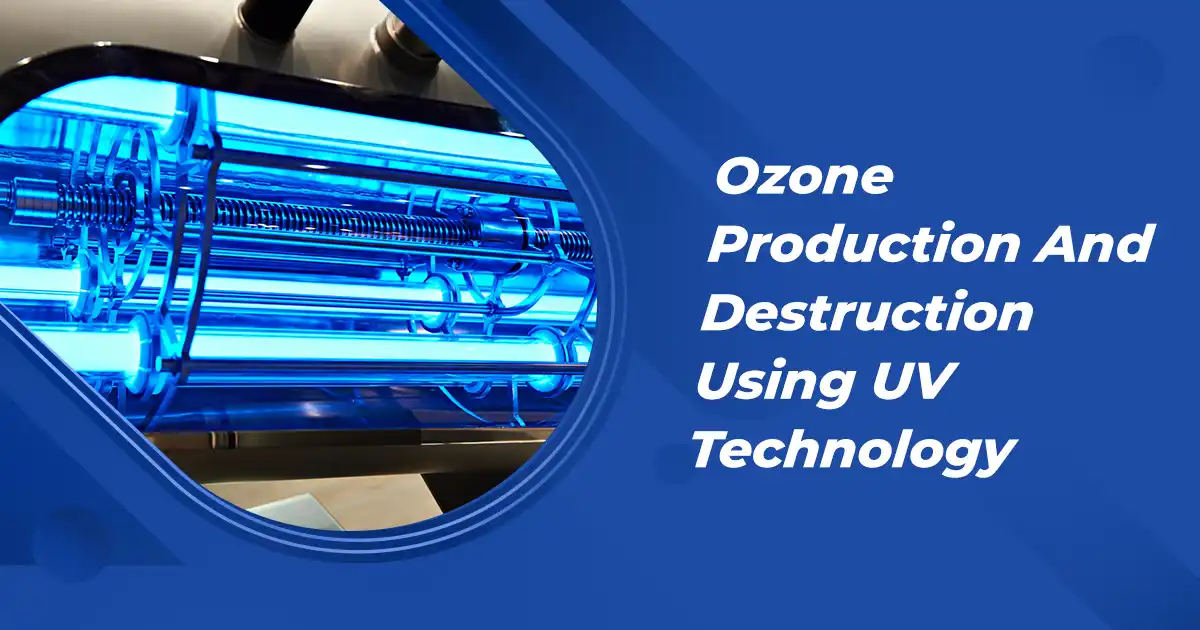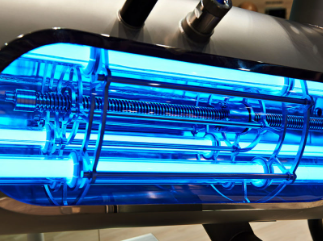UV-Destruction
Posted on: October 11, 2022
Ozone Production And Destruction Using UV (Ultra Violet) Technology

Ozone production using UV
Ozone is a powerful oxidizing agent used for air and water treatment.
Commercially, Ozone is usually generated using Ozone generators with air or oxygen as a feed gas through the principle of corona discharge. For selective applications, Ozone is also generated directly from pure water [water-based or electrolytic ozone generators].
There is a third method of generating Ozone through UV light. The technology for generating Ozone can greatly affect the application efficiency.
Ozone is produced naturally by UV light from the sun. The same method is used to generate ozone commercially. UV lamps generally produce 2 peaks in the UV light band 185 nm and 254 nm.
UV light wavelength of 185 nm is used to generate Ozone from feed gas of air or oxygen. Ozone gas generated using this method usually has a low concentration of 0.5% and therefore is used mainly for air treatment. Water treatment requires higher Ozone concentration [More than 6%-8%] as the solubility of Ozone in water is proportional to its concentration.
Ozone destruction using UV
Ozone serves as an important technology for comprehensive water treatment, but residual ozone can be damaging to finished goods, as well as to processing and fabrication equipment.
While a UV light wavelength of 185 nm can generate Ozone from air or oxygen, a UV wavelength of 240-280 nm can also be used to destroy Ozone molecules to protect downstream processes and equipment.

Ultraviolet light rays
Germicidal UV [254 nm] can quickly destroy Ozone in water without needing any chemicals and leaving no residue behind. It is therefore the best available technology for removing residual Ozone from water. However, the UV energy required to destroy Ozone is higher than the 300 J/m2 needed for disinfection. Typically a minimum dosage of 900 J/m2 allows complete removal of Ozone residual up to 1000 ppb from water.
One interesting aspect of UV destruction of Ozone is that it can be used to generate hydroxyl radicals in water which have a very short half-life but extremely high reactivity.
O3+ H2O → O2+ H2O2 (in the presence of UV light)
2 O3+ H2O2 → 2 •OH + 3 O2
This method is used in advanced oxidation processes to improve oxidation efficiency. COD reduction of 75% and above can be easily achieved using AOP. Many organic compounds are more susceptible to advanced oxidation than Ozone alone.
Common applications of AOP using UV and Ozone include
- COD reduction in water and waste water
- TOC reduction in process water
- Endocrine disruptive compound removal from municipal water/ effluents
- BTX [Benzene Toluene Xylene] removal
- Micro-pollutant removal from source water
2 comments

Shreyas Baratharaj | Director
Sheryas Barathraj has over 15 years of experience in municipal and industrial ozone applications. He has worked on some of the world’s largest ozone installations, with key interests in advanced oxidation, chemical synthesis, pharmaceutical water systems, and municipal drinking water treatment. LinkedIn Bio ›



https://shorturl.fm/RjPB3
Interesting read! Seeing trends shift is key, and accessibility is huge – like with options like the pinay game platform & its app. Mobile-first really changes things for players, doesn’t it? Hoping for good luck to everyone! ✨